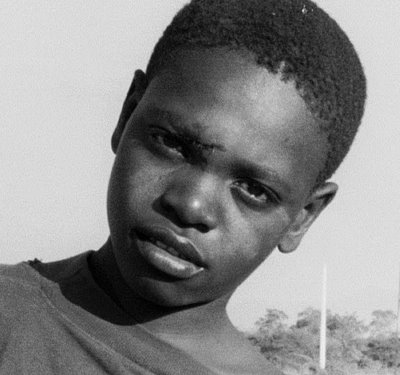I got excited picturing a weekend-menu of oven-grilled potatoes with salmon and bacon, when a friend who lives in California reminded me of this favorite recipe of hers. Instantly after my exciting weekend cooking plan, the reality flashed back and made me ask, “by the way, where can I get bacon in Dajabón? What about salmon? Have I ever seen it here?” In the capital city of Santo Domingo, there is nothing that we cannot find—gigantic French- or American- owned supermarkets offer literally everything. But the situation differs in this border town of Dajabón.
If I make the list of things that I cannot find in Dajabón, it will be very long. But I feel fortunate that I don’t usually miss things that aren’t available, as it conveniently allows me to live comfortably in different environments. (Thanks to my parents!) I can often satisfy my mental appetite with things that are here, and this satisfaction takes away a longing for things that aren’t here. In Dajabón, for instance, biting fresh mangoes and guavas; dining with yucca (kind of potato) dug from the soil that morning along with fried egg dropped on that day; filling stomach with freshly squeezed 100% pure pineapple or orange juice or cow’s milk... oh, not only food, but also: letting the body float on the rhythm of Bachata and Merengue; seeing the Milky Way in the sky filled with stars on the night without power; hearing the sound of waves of a deep blue sea; refreshing throat with super-cold Presidente beer; wrapping myself after bathing with cold water with a crispy towel dried under 40 degree C. strong sun; sharing time with Haitian children who have shiny eyes and lots of energy... Dajabón seems to lack in tourist attraction (the Lonely Planet’s Dajabón section occupies less than a page), but to me, it possesses lots of appeals to savor.
Often times, visitors ask me,
“Don’t you miss comfortable life?”
“How do you spend the weekend? Are there things to do in Dajabón?”
Hmm… I am sufficiently comfortable with my living here (except for the cockroaches and huge spiders that are walking peacefully in my village house). And do I ever get bored? ... rather I wish if I had a three-day weekend to do all the things I want to do.
Nevertheless, I do get very excited and pleased when those “things that aren’t here” appear in front of me. At that same moment emerges the feeling of missing, e.g., when I had miso-soup, when I listened to Japanese songs or when I bathed with hot shower after a few months of not having it... only then I realize how much I unconsciously missed those things that weren't here. Yet the so-called inconveniences of basic (limited) living condition does not make me envy more convenient and comfortable life at this moment.
I think all depends on what I am looking for, and why I choose to live in the environment that I place myself in.
ないものカリフォルニアに住んでいる友人が、ジャガイモ、ベーコンと鮭の重ね焼きの話をしていて、週末のメニューはこれだ!と一瞬やる気になったものの、あれ?そういえばダハボンでベーコンってどこで買えるんだっけ?鮭もみたことないぞ・・・と現実に戻され、この料理はここではできないことを認識。首都に行けばフランスやアメリカ資本の巨大スーパーマーケットがあり何でも手に入るが、国境の街ダハボンには、「ないもの」が多い。
この「ないもの」をリストアップしたらきりがないけど、ないならないで、恋しくならないたちだから、自分の性格や生活スタイルは、異なる環境に住むうえでは便利だと思っている。(この点は両親に感謝。) それより「あるもの」をめいっぱい味わい、その満腹感が、足りないものを忘れさせてくれるみたいだ。例えばここでは、とれたてのグアバやマンゴーにがぶりついたり、掘りたてのユッカ(芋)に生まれたての卵をフライして食べたり(栄養まるかじり!)、絞りたて100%果汁パイナップルやオレンジジュースでお腹を満たしたり・・・食べ物に限らず、バチャタやメレンゲのリズムに身体をのせたり、停電の夜の星空を見上げ天の川らしきものを見つけたり、真っ青な海で波の音を聴いたり、きんきんに冷えたプレジデンテ・ビールをぐびぐび飲んだり、水風呂の後40度の直射日光で乾かしたパリンパリンのバスタオルに身を包んだり、目がキラキラしている元気一杯のハイチの子どもたちと触れ合ったり、何もなさそうに見えるダハボンで、堪能できるのもは多い。
訪問者に、よく聞かれることがある。
「居心地良い生活が恋しくならない?」
ここでの生活も十分居心地いいんだけどなあ・・・(注:家の中を普通に歩いているゴキブリや大グモなど「余計にあるもの」を除いて)
「週末とかどうやって過ごすの?ダハボンでやることあるの?」
毎週末、やりたいことがありすぎて週末3日ほしいくらい・・・
とは言え、「ないもの」がふと出現したときには、やはり「超」嬉しくなる。そのときようやく、恋しいという感覚が出てくる。数ヶ月ぶりにお味噌汁を飲んだとき、久しぶりに日本の歌を聞いたとき、熱いシャワーを浴びたとき、それまで気付かなかったMissing-feelingが、懐かしさと共に、戻ってくる。でも今は「ないもの」がない生活が魅力的には思えない。
その時々、自分が何を求め、なぜその環境に身を置いて生活しているのか、それによりけりなんだと思う。
 I went to Wanament, the Haitian town bordering Dajabón. Walking a short bridge over the river that divides Haiti and the Dominican Republic, and taking a bike taxi for 5 minutes bring you to the center of Wanament. Inevitably, many Haitian come from Wanament and stay in Dajabón, often seeking an employment opportunity. There are quite a number of Haitian women who marry to Dominicans or to Haitian migrant workers in the Dominican Republic, and our statistics indicate that 15% of pregnant women who come to the hospitals and rural clinics in the Province are Haitians. Given this situation, the needs for Health handbook in Creole had emerged. Naturally, the Creole version of the handbook has to have photos of Haitian mothers and babies. I needed some more photos of Haitians.
I went to Wanament, the Haitian town bordering Dajabón. Walking a short bridge over the river that divides Haiti and the Dominican Republic, and taking a bike taxi for 5 minutes bring you to the center of Wanament. Inevitably, many Haitian come from Wanament and stay in Dajabón, often seeking an employment opportunity. There are quite a number of Haitian women who marry to Dominicans or to Haitian migrant workers in the Dominican Republic, and our statistics indicate that 15% of pregnant women who come to the hospitals and rural clinics in the Province are Haitians. Given this situation, the needs for Health handbook in Creole had emerged. Naturally, the Creole version of the handbook has to have photos of Haitian mothers and babies. I needed some more photos of Haitians.
 nto Dajabón.
nto Dajabón.



 Pointing at the scar by his right eye, he asked for a peso (3 cents). My silent voice asked, “why only one peso? You can’t do anything to your scar with one peso. Why can’t you ask for a bit more?” I felt contradictory thinking so while denying his act of begging.
Pointing at the scar by his right eye, he asked for a peso (3 cents). My silent voice asked, “why only one peso? You can’t do anything to your scar with one peso. Why can’t you ask for a bit more?” I felt contradictory thinking so while denying his act of begging.